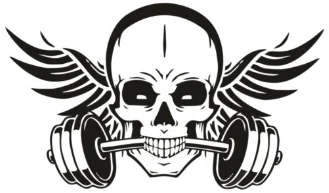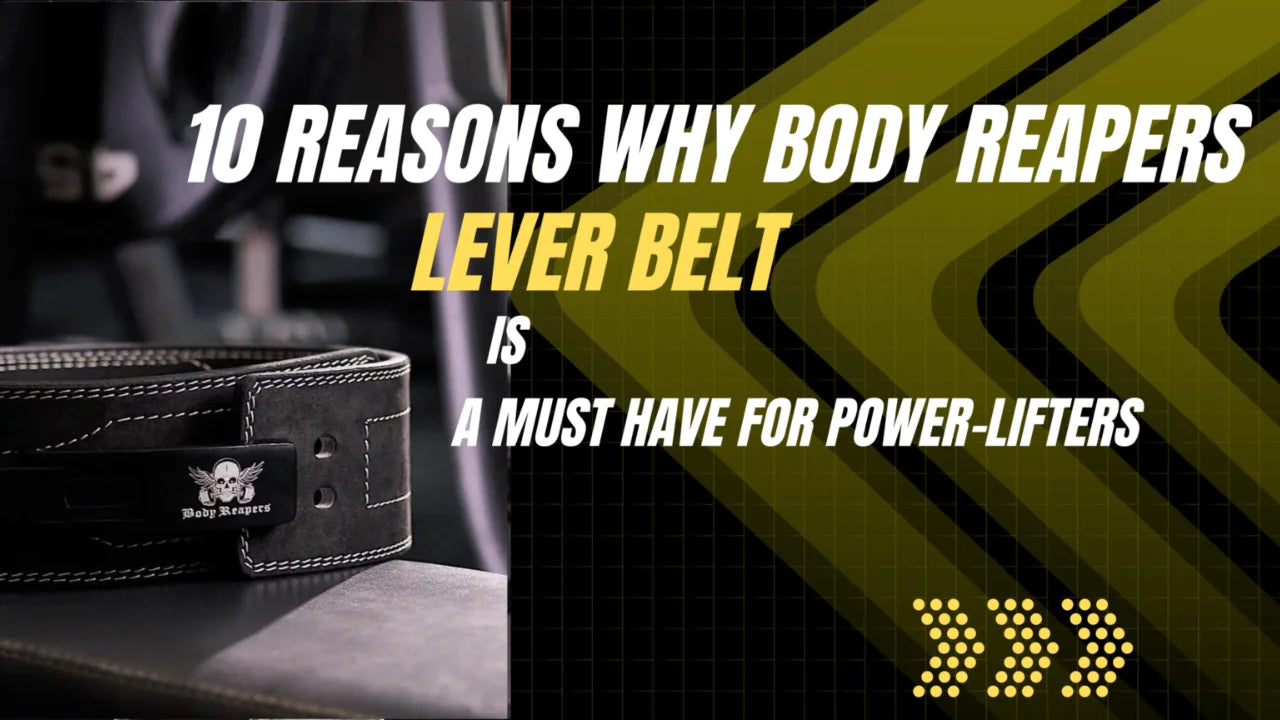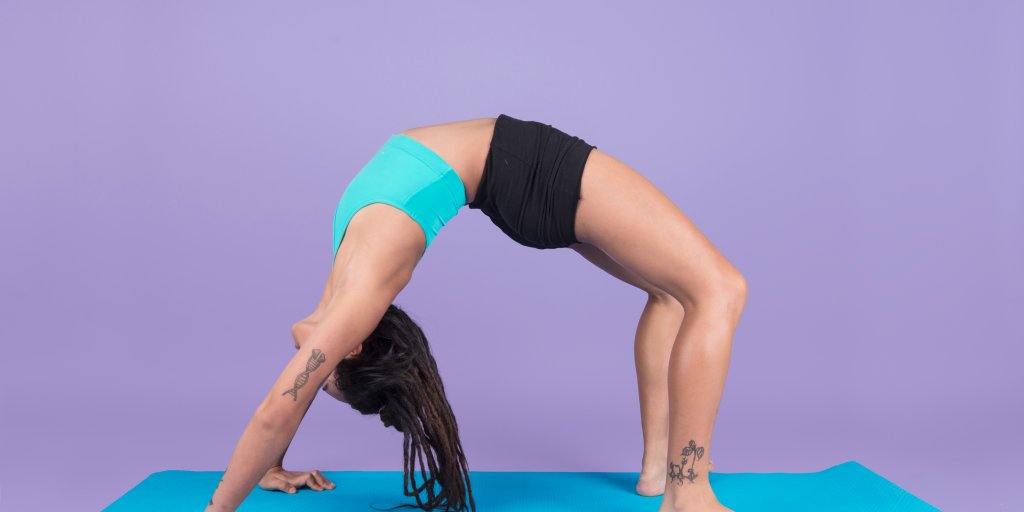Are you looking to build muscle and lose fat? Do you want to maximize the results of your workouts? Isn’t that what they say at the starting of every other ‘lose weight’ blog/video?
By now you've probably sifted through countless blogs and YouTube videos in search of the best way to lose fat and build muscle, only to end up confused and back to square one.
But this is not your just another weight loss blog. This is for everybody out there who wants to feel good in their skin, who know and value that having a better shape and form is a thousand times better than having thinner/slimmer body and who understand that fat loss & muscle gain is what should be focused on instead of simply ‘weight loss’. If you are one of them, then this article is for you where we'll share science-backed secrets to burning fat and building muscle that too with the help of gym wearables.
But before that, let’s get a few things straight-
- Your mindset, approach and dedication will decide how you feel through your journey of ‘becoming the better version of yourself’.
- Not every workout is supposed to work for you and not a particular workout should be followed everyday. You need to change your workouts regularly so you can target all different parts of your body.
- Losing overall weight is not just about shedding those extra pounds which stop you from feeling confident in certain dresses but it is also about getting stronger instead of feeling ‘weak’ from lack of energy, which is why they say that it is 80% diet and 20% exercise.
- Last but definitely not the least before we move ahead to how exactly you can lose weight and gain muscle, the worst thing to do which can kill your entire progress on losing weight (irrespective of whether its a month or a whole year), is to ‘compare yourself’. Fitness is a lifestyle and it’s different for everyone. While fitness might simply be a 30 min morning jog to X, it can be a whole 2 hour session for Y.
 Enough of pep-talk for now! Let’s dive straight in to the juicy part. We will be discussing-
Enough of pep-talk for now! Let’s dive straight in to the juicy part. We will be discussing-
- Setting goals
- Planning Workout
- Incorporating a healthy and balanced diet
- Keeping track of your healthy lifestyle
Goals When it comes to starting off a new ‘get in shape’ journey, we often tend to overestimate ourselves and set unrealistic goals such as losing 20 pounds in a week. While it may or may not be possible, it definitely isn’t the healthy way to do it. To create a successful fitness program, you need to set realistic goals. Aim for a healthy rate of fat loss and muscle gain, such as 1-2 pounds of fat loss per week and 1-2 pounds of muscle gain per month.
Along with that, you must also take into consideration what really fits your schedule. Maybe you are a student juggling lectures and your part time job, maybe you are a homemaker whose entire day is dedicated to the family, maybe you are a working professional who comes home tired by 8 in the evening; so you have to see what really can work for you instead of you trying to make everything work. There’s a difference and you know it.
Workout
Weight lifting is an effective way to build muscle and improve strength. When you lift weights, you create micro-tears in your muscle fibers. These tears then repair themselves and grow back stronger, resulting in increased muscle size and strength.
When it comes to lifting weights for fat loss and muscle gain, there are a few key principles to keep in mind. First, focus on compound exercises that work multiple muscle groups at once. This will help you burn more calories and build more muscle. Second, gradually increase the weight and intensity of your workouts over time. This will help you continue to challenge your muscles and make progress. Aim to lift weights 2-3 times per week, with at least one day of rest in between each workout. To maximize your results, you must incorporate the following exercises into your workout routine:
- Squats: Works multiple muscle groups, including your glutes, quads, hamstrings, and core. Improves balance and stability.
- Deadlifts: Targets multiple muscle groups, including your back, glutes, hamstrings, and core. Improves grip strength.
- Bench Press: Primarily works your chest, shoulders, and triceps. Engages core muscles for stability.

Depending upon the types of exercises, you would require to incorporate certain gym wearables which can not only help you achieve your results in a faster and safer way, but also help you recover quickly.
Looking for gym wearables to fit your needs? Body reapers has everything you need, all in one place.
Incorporate Cardio
Cardiovascular exercise is essential for fat loss. When you perform cardio, you burn calories and create a calorie deficit, which is necessary for fat loss. Cardio also helps improve heart health and endurance.
Incorporate cardio into your fitness routine 2-3 times per week. This can include activities such as running, cycling, swimming, or any other activity that raises your heart rate.
- High-Intensity Interval Training (HIIT): Involves short bursts of high-intensity exercise followed by periods of rest or low-intensity exercise. Helps burn calories, increase metabolism, and improve cardiovascular health.
- Cycling: Low-impact cardio exercise that can help you burn fat and build leg muscles. Can be done outdoors or on a stationary bike at the gym.
- Running: Effective cardio exercise that can help you burn fat and build leg muscles. Can be done outdoors or on a treadmill at the gym.
But when it comes to getting stronger instead of simply losing weight, you major focus for your fitness routine should be strength training. While Incorporating exercises that target major muscle groups such as the chest, back, arms and legs can help you build muscle, increase your metabolism, and improve your overall physical health. Be sure to start with a weight that is challenging but manageable, and gradually increase it over time as your strength improves. Additionally, consider incorporating resistance bands, kettlebells, or other equipment to add variety to your workouts and target different muscle groups.
Strength training can also have numerous benefits beyond just physical health. It can improve bone density, reduce the risk of injury, and even boost self-confidence. By setting clear goals and sticking to a consistent routine, you can see significant improvements in your strength and overall fitness.
In conclusion, losing fat, gaining muscle, and improving strength is possible with the right approach. Prioritize strength training, incorporate cardiovascular exercise, eat a balanced diet, and make sure you're getting enough rest and recovery. With consistency and dedication, you can achieve your goals and improve your overall health and fitness.
Diet
Nutrition is a crucial factor in any fitness goal. When it comes to losing fat, you need to create a calorie deficit by burning more calories than you consume. This means eating fewer calories than you burn each day. On the other hand, gaining muscle requires a calorie surplus, meaning you need to consume more calories than you burn each day. And when it comes to improving strength, you need to consume enough protein to support muscle growth and repair. This all might get confusing at some point as to ‘what should I eat to gain muscle but lose fat’.
It all boils down to finding what’s the right ‘balance’ for you. Two sides of a coin-
To lose fat, aim for a moderate calorie deficit of 300-500 calories per day. This will allow you to lose 0.5-1 pound per week, which is a healthy and sustainable rate of weight loss. Make sure to eat a balanced diet that includes plenty of protein, healthy fats, and complex carbohydrates. Avoid highly processed foods and focus on whole foods such as lean protein, fruits, vegetables, and whole grains.
To gain muscle, aim for a calorie surplus of 300-500 calories per day. Make sure to consume enough protein to support muscle growth and repair. Aim for 1 gram of protein per pound of body weight per day. This means if you weigh 150 pounds, you should aim for 150 grams of protein per day. Make sure to eat a balanced diet that includes plenty of healthy fats and complex carbohydrates as well.
So how do you find a balance? By majorly prioritizing protein. Protein is an essential nutrient for building and repairing muscles. Aim to consume at least 0.8x2 grams of protein per pound of body weight (almost 1 gm of protein per 1 kg of body weight). Good sources of protein include lean meats, fish, eggs, dairy, legumes, and nuts.
Make sure you pair it up with necessary carbohydrates and fats to fuel your workouts and provide your body with energy. Aim to eat a balanced diet that includes -
- Healthy fats such as those found in avocados, nuts, and fatty fish, as they can help support muscle growth and fat loss.
- Complex Carbohydrates such as whole grains, fruits, and vegetables, for they can provide your body with the energy it needs to fuel your workouts. They also contain important vitamins and minerals that are essential for overall health.
Pro-tip that goes without saying, avoid processed foods (on a regular basis) as are often high in calories, sugar, and unhealthy fats, and can sabotage your fat loss and muscle gain efforts. Focus on whole, nutrient-dense foods instead.
And of course, stay hydrated as is important for overall health and can also help support fat loss and muscle gain. Aim to drink at least 8-10 cups of water per day, and more if you're sweating heavily during your workouts.
Remember, a successful fitness program involves both exercise and nutrition

Tracking
Rest and recovery are just as important as exercise when it comes to building muscle and improving strength. Your muscles need time to repair and grow, so make sure you're getting enough rest between workouts. Aim to get at least seven hours of sleep each night and take rest days when you need them.
Losing fat, gaining muscle, and improving strength are common fitness goals that many people strive for. As mentioned earlier, while the goals can seem daunting initially, with the right approach, they are achievable. And tracking your progress can help you stay motivated and make adjustments to your workout and diet plan as needed. Take measurements, keep a food diary, and track your workouts to see how you're progressing over time.
Not necessarily required but wearables such as a fitness tracker, smartwatch or a heart rate monitor can help you stay on track and even make your journey a little more enjoyable by motivating you to hit your daily goals.
But amidst all of this, what you must never forget is -
- Get Enough Sleep
Sleep is crucial for muscle growth and recovery. When you sleep, your body releases growth hormone, which is necessary for muscle growth and repair. Lack of sleep can lead to decreased muscle growth and increased fat storage.
Make sure to get at least 7-8 hours of sleep per night. If you have trouble sleeping, try to establish a regular sleep schedule, avoid electronics before bed, and create a relaxing sleep environment.
- Stay Consistent
Consistency is key when it comes to achieving any fitness goal. Results take time, and it's essential to stay consistent with your nutrition and exercise habits. Set realistic goals and track your progress over time. Celebrate your successes and learn from your setbacks.
Always remember, consistency doesn’t mean you hitting the gym everyday. Consistency can also be going to the gym 3-4 times a week for strength training while going for running/cycling 2 days/week and giving yourself 1 day of rest so your body gets enough time to recover.
With that being said, you will have to find what’s the right workout, right diet and right lifestyle for you. Goodluck!




Dejar un comentario
Este sitio está protegido por hCaptcha y se aplican la Política de privacidad de hCaptcha y los Términos del servicio.